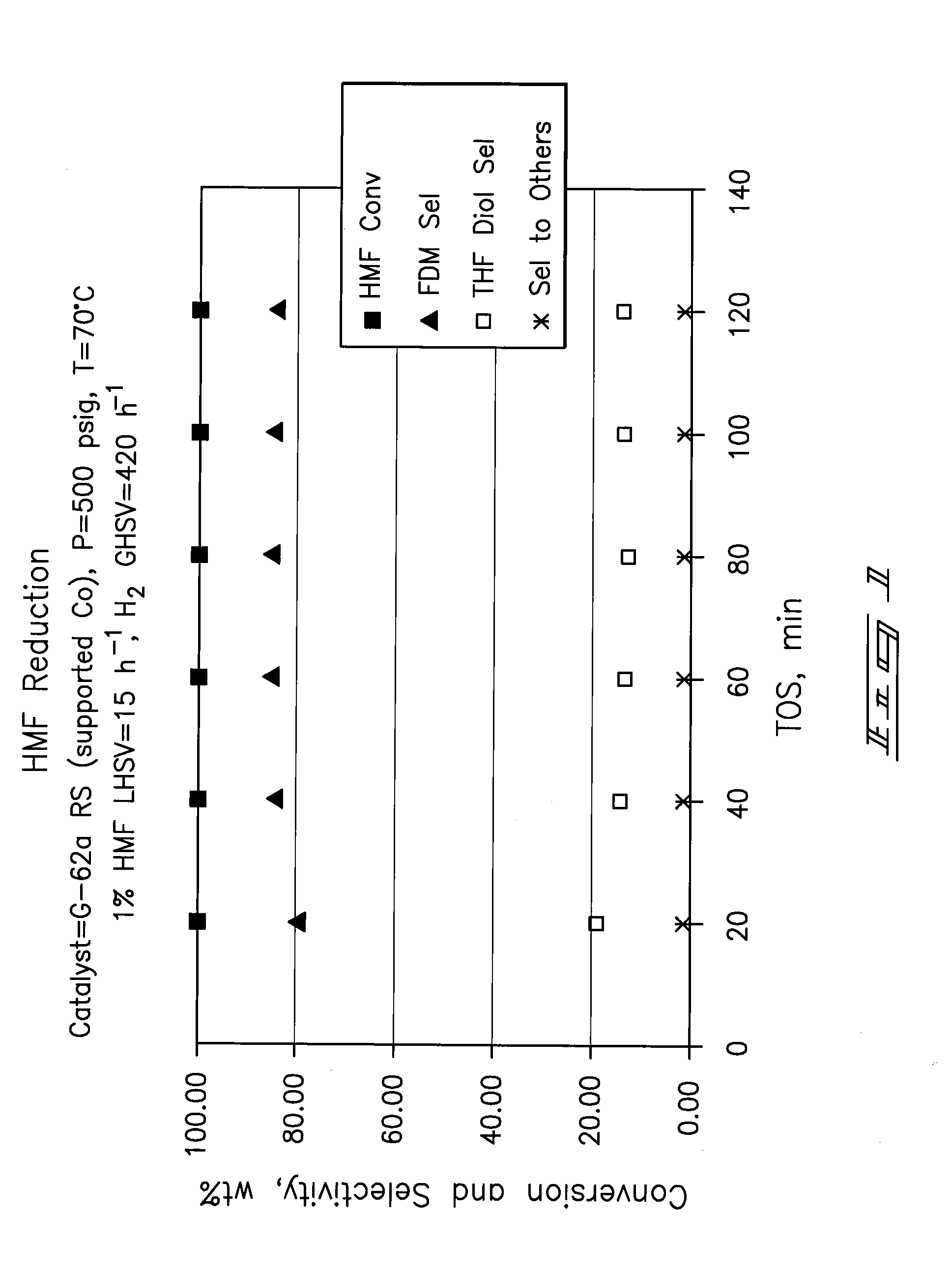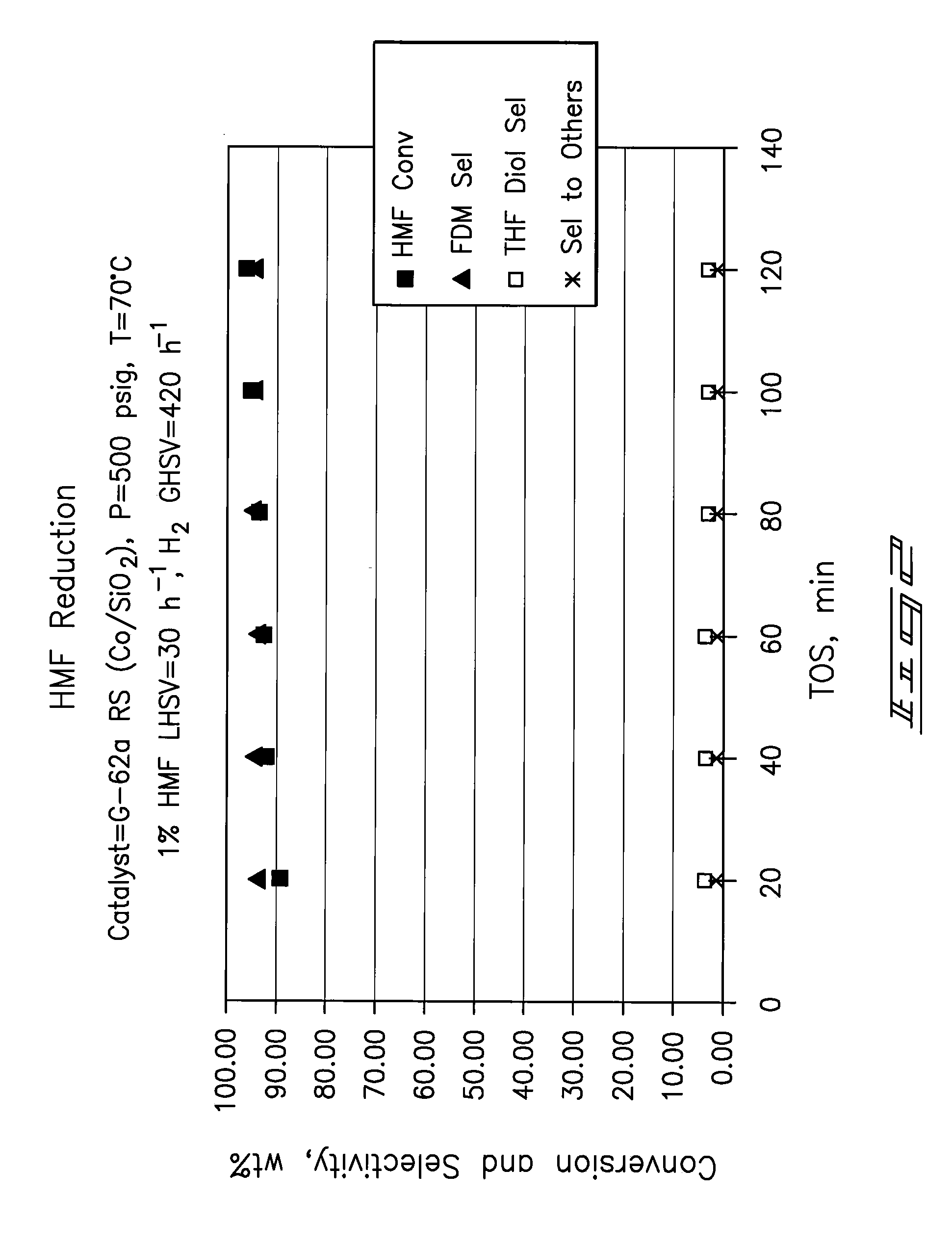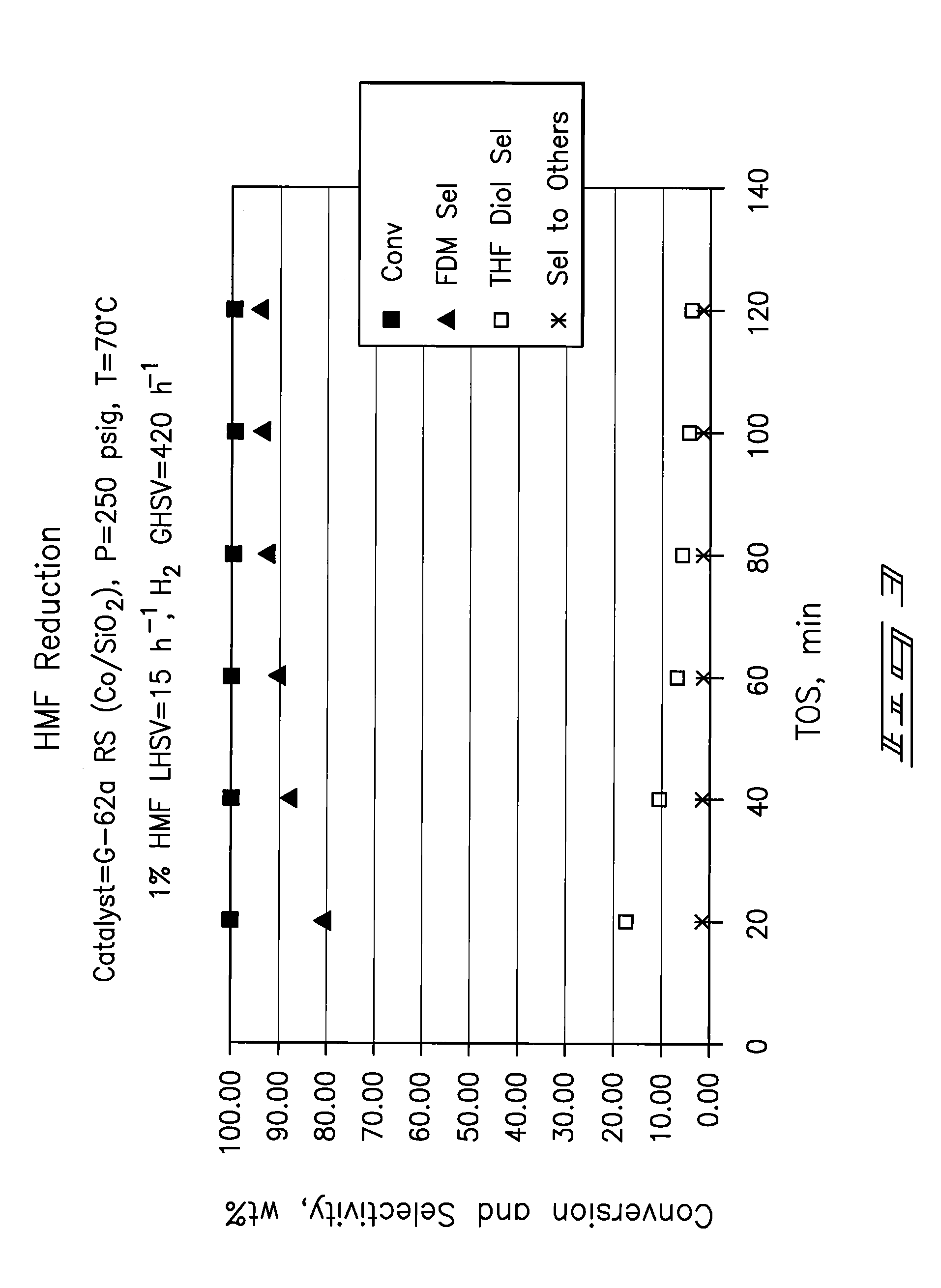Hydroxymethylfurfural Reduction Methods and Methods of Producing Furandimethanol
a technology of hydroxymethylfurfural and reduction methods, applied in the field of hydroxymethylfurfural reduction methods and methods of producing furandimethanol, can solve the problems of low selectivity, low yield, and therefore cost prohibitive, and achieve the effect of reducing hm
- Summary
- Abstract
- Description
- Claims
- Application Information
AI Technical Summary
Benefits of technology
Problems solved by technology
Method used
Image
Examples
example 1
Selective Reduction of HMF Utilizing Pd / C
[0103] To 10 mL of water in a small pressure autoclave (45 mL total volume) was added 0.2289 g of dry Pd / C catalyst (commercially available 0.8% Pd on carbon). A magnetic stir bar was added and the vessel was sealed. The reactor was purged with N2 and was pressure tested for leaks at 500 psi. After confirming an absence of leaks, the vessel was vented, the line was removed and 0.4513 g of HMF dissolved in 5 mL of water was added utilizing a small syringe and needle through the 1 / 16 inch fitting on the head of the vessel.
[0104] The vessel was then purged with N2, purged with H2 and pressurized to 500 psi H2. The reaction vessel was isolated from the H2 feed line by a valve downstream from the pressure gauge. The reactor was brought to a reaction temperature of 60° C. in less than 5 minutes. After 2 hours reaction time (measured from the point of reaching 60° C.) the pressure within the vessel was determined to be 330 psi. The vessel was then...
example 2
Reduction of HMF Utilizing RANEY® Metals
[0106] Reduction reactions were performed utilizing RANEY® cobalt, RANEY® copper and RANEY® nickel in independent reactions. The reduction reactions were performed at 60° C. and 500 psi H2 for at least 2 hours. The experiment conducted utilizing RANEY® cobalt resulted in a 100% HMF conversion with 97% selectivity for FDM upon reacting for 2 hours. As indicated above, RANEY® copper was less reactive and resulted in a different product distribution.
example 3
Reduction of HMF with Production of THF Dimethanol
[0107] A commercially available nickel powder catalyst (Mallinckrodt Specialty Chemical Company, Calsicat, S-96-674, #69F-093A, E-473P L, Dec. 6, 1996) was utilized. The catalyst was received and stored under water.
[0108] 1 mL of catalyst slurry was placed in a glass liner and 9 mL of water added. A magnetic stir bar was added and the liner sealed in a 45 mL autoclave. The autoclave was purged and pressure / leak tested to 500 psi with hydrogen. The autoclave was vented and 0.45 grams of HMF dissolved in 5 mL of water was added. The reactor was purged again, and pressurized to 500 psi with hydrogen. The desired temperature of 60° C. was achieved upon heating for approximately 5 minutes and was maintained for 2 hours at which time the first sample was removed and analyzed by LC. HMF conversion was 99% with selectivity to FDM of 84%. Over reduction of FDM to THF dimethanol occurred with a selectivity to THF dimethanol of 10%.
[0109] Af...
PUM
| Property | Measurement | Unit |
|---|---|---|
| temperature | aaaaa | aaaaa |
| temperature | aaaaa | aaaaa |
| temperature | aaaaa | aaaaa |
Abstract
Description
Claims
Application Information
 Login to View More
Login to View More - R&D
- Intellectual Property
- Life Sciences
- Materials
- Tech Scout
- Unparalleled Data Quality
- Higher Quality Content
- 60% Fewer Hallucinations
Browse by: Latest US Patents, China's latest patents, Technical Efficacy Thesaurus, Application Domain, Technology Topic, Popular Technical Reports.
© 2025 PatSnap. All rights reserved.Legal|Privacy policy|Modern Slavery Act Transparency Statement|Sitemap|About US| Contact US: help@patsnap.com



